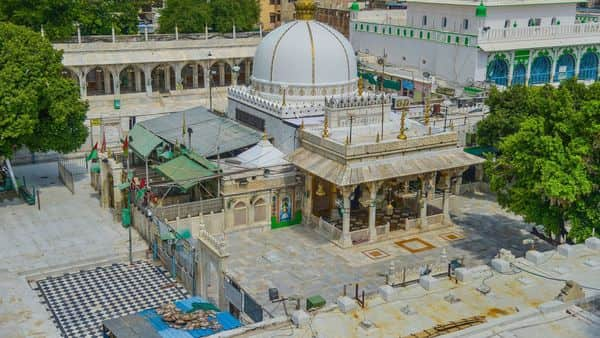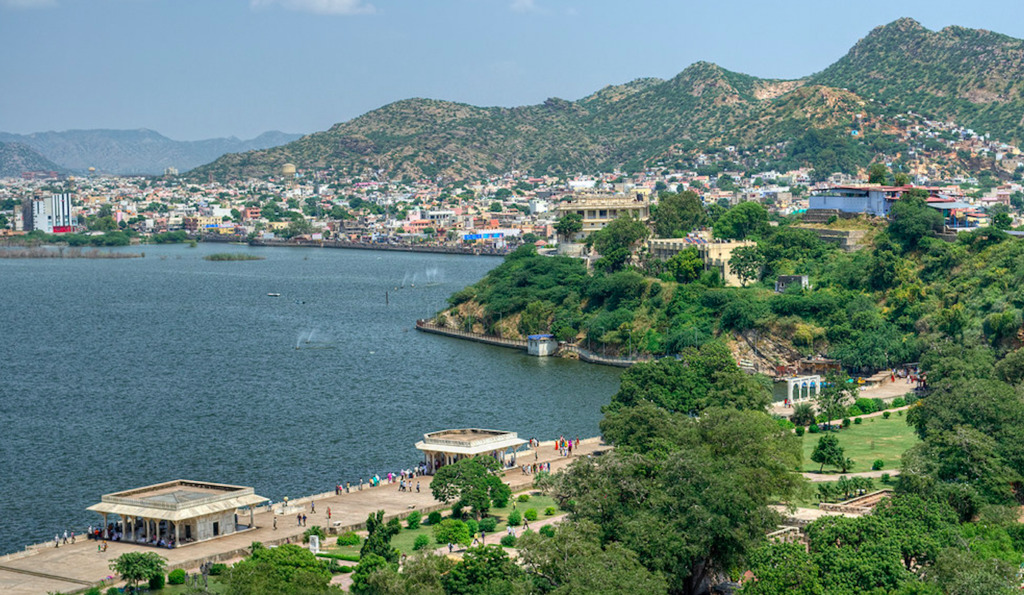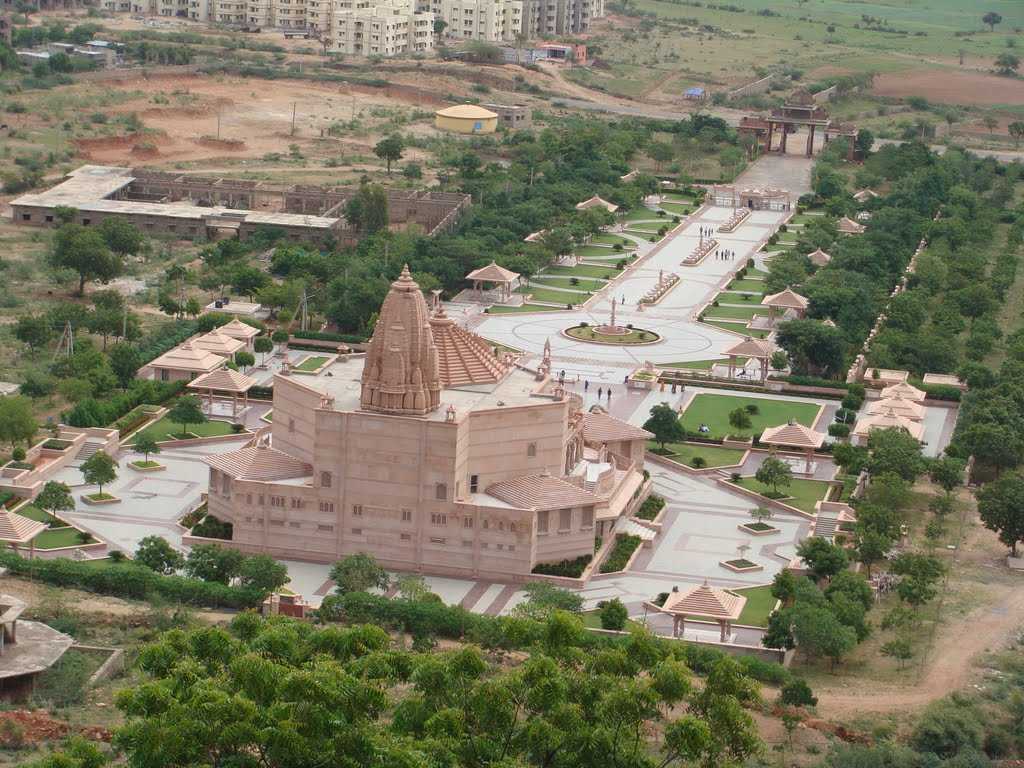Best Tourist Season (September – March)
Airport: Nearest Airport is Jaipur 132 km.
Railway: Ajmer is linked by rail with Agra, Ahmedabad, Allahabad, Bangalore, Delhi, Dehradun, Jaipur, Kanpur, Mumbai,
Patna, Kolkata and Udaipur
Road: Bikaner 290 km, Bundi 165 km, Chittaurgarh 188 km, Deogarh 150 km, Delhi 395 km, Jaipur 135 km, Jodhpur 210 km, Kishangarh 25 km, Khimsar 220 km, Kota 205, Makrana 110 km, Mount Abu 375 km, Pushkar 11 km, Roopangarh 50 km, Ranthambhore 260 km, Rohet 200 km, Samode 175 km, Sardar Samand 160 km, Udaipur 290 km
Ajmer – a city in Ajmer District in Rajasthan State, a very beautiful city surrounded by the mountain by all sides. You will see the spectacular Aravali Mountains around Ajmer. Ajmer is also known as Ajaymeru, ruled by Prithviraj Chauhan. It was a key centre of Chauhan power along with the twin capital of Delhi, but after Prithviraj Chauhan defeated by Sultan Mohammad Ghori in 1193, it had to pass through a chequered and violent history.
Ajmer has remained throughout a great centre of pilgrimage for both Hindus and Muslims.
Geography
Ajmer is situated in 26° 27, N. lat. and 74° 44, E long, on the lower slopes of Taragarh hill, in the Aravalli Range. To the north of the city is a large artificial lake, called Anasagar, adorned with a marble structure called Baradari.
Elevation 486 m (1,594 ft).
Area
Ajmer is 55.76 km (152 sq m)
Climate
Summer maximum of 44°C and minimum 3835°C
Winters maximum 24°C and minimum 16°C
Railfall 38 to 51 cm (annual)
Demographics
Population 485,197 (as of 2001 India census)
Males 52%
Females 48%
Ajmer has an average literacy rate of 74%, higher than the national average of 59.5%.
Male literacy is 56%, and female literacy is 44%.
In Ajmer, 12% of the population is under 6 years of age.
Sightseeing in Ajmer:

The Ajmer Sharif Dargah : (just 2 km from Ajmer Railway Station) The Dargah of Moinuddin Chishti (Gharib Nawaz -Benefactor of the Poor), also known as Ajmer Sharif Dargah or Ajmer Sharif, an international waqf, an Islamic mortmain managed by the Dargah Khwaja Saheb Act, 1955 of the government of India. Ajmer Sharif Dargah is situated at the foot of the Taragarh Hill. Estimated around 150,000 pilgrims (mainly Muslims) visit the dargarh of Moinuddin Chishti every day.

Adhai-din-ka-Jhonpda : Adhai Din Ka Jhonpra – literally means “shed of two and a half days” – a mosque built in a two-and-a-half days. This mosque was commissioned by Qutb-ud-din-Aibak, on orders of Muhammad Ghori, in 1192 CE. It was completed in 1199 CE, and further beautified by Iltutmish of Delhi in 1213 CE. This is one of the oldest mosque in India, and the oldest surviving monument in Ajmer, Rahasthan, INDIA.
Mayo College :
The only boys-only independent boarding school in Ajmer, Rajasthan, INDIA. Founded in 1875 by Richard Bourke, who was the Viceroy of India from 1869-1872. This is one of the oldest public boarding schools in India.

Anasagar Lake :
An historic man-made lake built by Maharaja Anaji (1135-1150 AD). A garden laid by Em-peror Jahangir is just by the lake side. Emperor Shah Jahan later added five pavilions, known as Baradari, just between the garden and the Lake Anasagar Lake.

Soniji Ki Nasiyan :
An architecturally rich Digambara Jain Temple, built in the late 19 century. The main chamber is known as Swarna Nagari ‘City of Gold’, has several gold-plated wooden fig-ures, depicting figures in the Jain religion. Also has a gold model of the city of Ayodhya, the birthplace of Ram
Lake Foy Sagar :
Just outskirts of Ajmer, is a picturesque artificial lake, was created as a famine relief project in 1892. It offers a beautiful panoramic views of the neighbouring Aravali moun-tains.

Nareli Jain Temple :
The Nareli Jain Temple – also known as Sri Gyandoaya Tirth Kshetra, located on the out-skirts of Ajmer on the National Highway to Jaipur. This Jain Temple consists of 24 minia-ture temples in its vicinity known as Jainalay, they represent the Jain Tirthankars. The Nareli Jain Temple an important pilgrimage point for Digambara Jains.
The Sai Baba Temple :
The temple is located on the way to Prithviraj Chauhan Statue and an important tourist destination which has the same style of architecture as the Sai Baba Temple in Shirdi.

Taragarh Fort :
The Fort originally believed to be built by Mughal ruler Akbar. This is reputed to be one of the oldest hill forts in India and the world.
Akbari Fort & Museum :
The Museum was once the residence of Prince Salim, the son of Emperor Akbar in 1570.This museum houses a collection of Mughal and Rajput armour and sculpture.
Tomb of Khwaja Husain Ajmeri :
The Tomb (Maqbara, Shrine) of Khwaja Husain Ajmeri Chishty Rehamatullah Alaih (Shaikh Husain Ajmeri) who was the superintendent and Sajjada Nasheen of Ajmer Sharif Dargah in Emperor Akbar’s Time.
Shah Jahan’s Mosque :
The Mughal Emperor Shah Jahan (who built Taj Mahal) visited Ajmer 5 times during his reign (1627-58). This mosque is the chief monument of Emperor Shah Jahan’s devotion to Hazrat Khwaja Moinuddin Chishty.
Excursions Trips from Ajmer :
Pushkar Lake or Sarovar- a sacred lake of Hindus A famous holy Pushkar Lake is just about 11 km from Ajmer. The Hindu scriptures de-scribe it as Tirtha Raj – the king of pilgrimage, surrounded by 52 bathing ghats (a series of steps leading to the lake), where pilgrims throng in large numbers to take a sacred bath, especially around Kartik Poornima (October – November) and the Pushkar Fair happens. More than 500 Hindu temples are situated around the lake precincts.

Jagatpita Lord Brahma Temple :
A Hindu Temple in Pushkar, Rajasthan, INDIA. The temple is one of very few existing temples dedicated to Lord Brahma – Hindu creator GOD, and the most prominent among all. The temple, believed to be 2000 yrs old.
Pritviraj Smarak :
The Smirk is dedicated to Maharaja Prithviraj of Rajput Chauhan dynasty of Ajmer, located on the way from Ajmer to Pushkar. Tourist can enjoy a great view of Ajmer city from Pritviraj Smarak.
